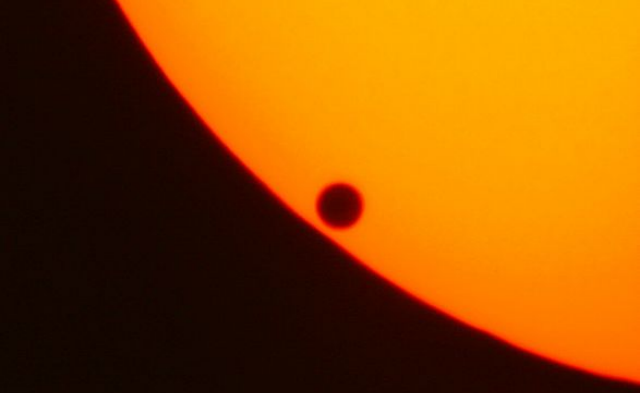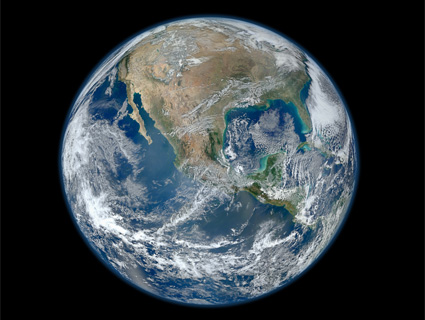 2004 Transit of Venus: de:Benutzer:Klingon via Wikimedia Commons
2004 Transit of Venus: de:Benutzer:Klingon via Wikimedia Commons
The transit of Venus begins today, June 5. The next one is not for 105 years, in 2117. You can check where and when today’s transit will be visible in the map below. Plus a live webcast of the transit at NASA tv.
There’s a nifty citizen science effort underway via Astronomers Without Borders if you care to download the free app and contribute the data from your own sighting. Here’s what they say about the history of the event:
Only six Venus transits have occurred since the invention of the telescope in the early 17th century. There were no observers of the first one in 1631 that we know of, and only two who we know saw the transit in 1639. In the 18th century, Sir Edmond Halley described a method for measuring the distance from the Earth to the Sun through observations of Venus transits from widely separated sites. The same had been attempted with transits of Mercury but Venus transits allow for much more precise measurements.Halley’s publication led to expeditions sent around the world by many nations to view the pair of Venus transits later in the 17th century. The same took place with the 19th century pair of Venus transits. No Venus transits occurred in the 20th century. While 20th century methods eventually supplanted the Venus transit method in measuring distances in the solar system, the history of the event is an important link to our past.
 Fred Espenak, NASA
Fred Espenak, NASA
As for what scientists are looking to learn from the 2012 transit, LiveScience notes a few interesting research questions, including:
- Those bizarre blue stripes in Venus’ upper clouds called “blue absorbers” or “UV absorbers” that absorb nearly half the total solar energy hitting the planet, keeping it superhot with surface temperatures greater than 860° F (460° C). What are they made of? Maybe elemental sulfur?
- What’s making the Venusian lightning, since we don’t think there’s any rainfall there?
- What’s behind Venus’ super-rotating atmosphere driven by storms circling the planet at speeds greater than 220 mph (360 kph), 60 times faster than the planet itself rotates.
- Most of all, what happened to Venus’ oceans, were they destroyed by a runaway greenhouse effect? If so, how long did it take?
 Venus in true color: NASA/Ricardo Nunes
Venus in true color: NASA/Ricardo Nunes
The video below summarizes our modern understanding of the transit, including a brief history of its science and what we hope to learn today.
ScienceCasts: The 2012 Transit of Venus from Science@NASA on Vimeo.
The next video recreates a high-tech presentation of the transit from 1769. The tools have changed but not the fascination.
Artificial Transit of Venus Model from Transit of Venus on Vimeo.











